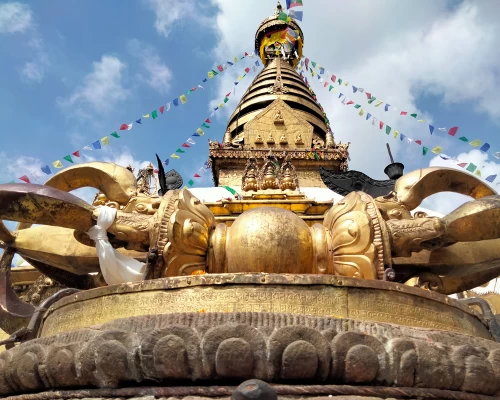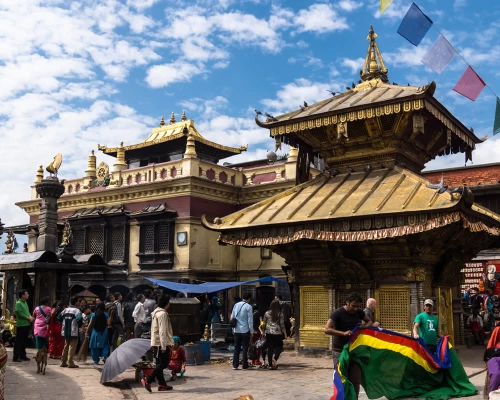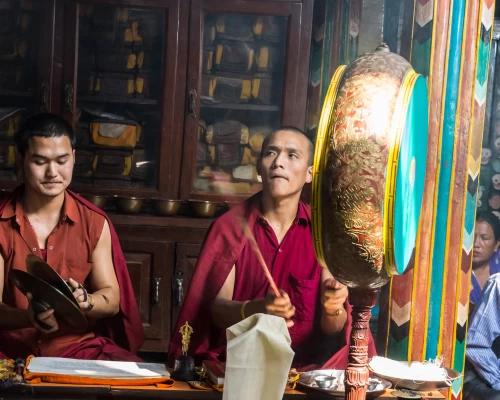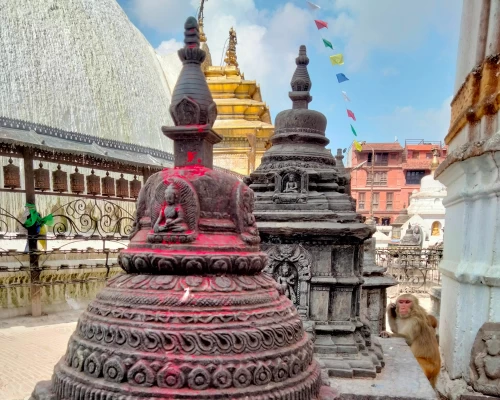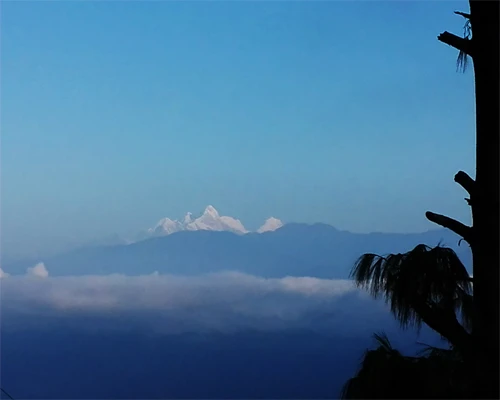This is anotherUNESCOCultural world heritage site in Kathmandu. The source of the Valley’s mythical beginning is the golden spire of the 5th century. The Stupa is on the top of the hillock and is fully covered with numerous monuments and temples with lots of colorful prayer flags hanging over the tree branches and poles. It is also called Monkey’s Temple because of its higher inhabitance. Swayambhunath is one of the most recognizable symbols for the Buddhists, and Hindus and is known as UNESCO’s world heritage site. There are two legendary histories about the formation of this Stupa. The religious mythology explains that there was a big lake (NAGDAHA) in this valley and a Buddhist Enlightened saint Manjushree went to the southern side of the valley and drain the water with the support of his magical divine sword then transformed the Lotus flower seed into the shining place where the Stupa is standing now. But the Ecologists say that, of course, there was a big lake but once in the world there was a terrible earthquake and because of strong vibrations water turned into a strong wave and swiped away the softest part from the southern side and the valley became an inhabitable place.
Soyambhunath Stupa or temple is equally important for Buddhists and Hindus. Most of the shrines are combined for both Buddhist and Hindu religious aspects. The Swarms of pilgrims and maroon colors robe-wearing monks circle the complex and spin the prayer wheels, while the Hindus are gathering inside the temple and worship together in mutual harmony. The shrine is situated on top of the hill. If you go by driving then you arrive at parking lots nearly to the top but if you walk then you have to take stone staircases. The most challenging stone staircases are on the eastern side, if you want to climb along there then you must step over 336 steep stone staircases to the top.



